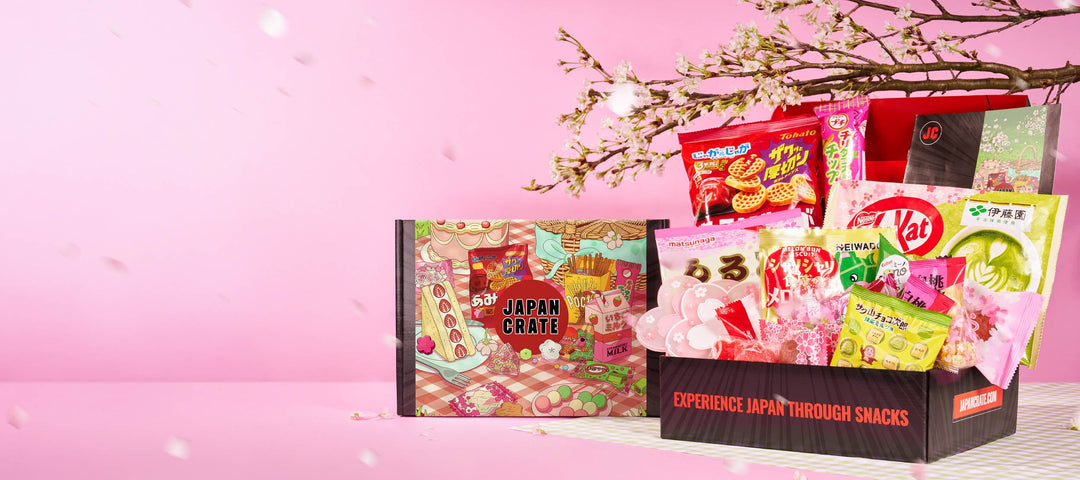All you need to know about Japanese Pan Noodles
Noodles are the cornerstone of Japanese cuisine. In fact, Japan has been practicing the technique of creating noodles for more than a thousand years. No vacation would be complete without trying just a little of the variety available; Japanese people adore noodles made from wheat, bean flour, yams, buckwheat, and more in so many different ways. The various kinds of Japanese noodles can be consumed cold with dipping sauces, hot or cold with stir-frying, or cold with salad. These are generally considered to be simple, quick dinners. Indeed, there are many varieties of noodles for foodies to learn about, and Japanese pan noodles are no exception. They offer a diversity of flavors, textures, and culinary experiences. Read on and learn everything you need about Japanese Pan noodles.
What are Japanese Pan Noodles?

Pan-fried noodles are a delectable Asian dish that is certain to become a family favorite. The crunchy noodles combined with the savory vegetable broth make for the ideal treat to provide for your family during the hectic weekdays. Also, only one pan can be used to create this dish. Because they only require a single skillet and a few straightforward, easily accessible ingredients from your kitchen, these noodles are one of my go-to dishes for celebrations of all kinds. The vegetables, noodles, and sauce only need to be stir-fried in a wok until thoroughly blended, and the noodles only need to be quickly blanched while the sauce is put together.
Furthermore, these Japanese pan noodles are so popular that convenience stores now offer them. Once you've tried it, you'll start making extra Japanese pan noodles. They frequently come with pork, shredded cabbage, bean sprouts, and sauces with flavors like Worcestershire or barbecue.
History of Japanese Pan Noodles

Over time, some foods have changed. They adapt to new environments or are inspired by other cuisines as the human population moves about. Pan-fried noodles, or liang mian huang, are one of those dishes. A traditional Chinese noodle dish from Shanghai and Suzhou is where pan noodles first appeared. The dish consists of cooked noodles fried in a pan until they slowly become brown and crispy over low heat. The noodles' interior is still wet despite their exterior being crunchy. Then, freshly stir-fried foods are added on top, typically sliced pork or shrimp combined with other ingredients. Every thread of the crispy noodles is gradually penetrated by the hot, viscous sauce. Besides this fantastic flavour, the most coveted aspect of the meal is the double-layered texture of the noodles.
The delectable liang mian huang quickly gained popularity among the Japanese communities after arriving in Japan. At that time, Japanese pan noodles, or stir-fried Cantonese noodles, were typically served in renowned tea shops sizzling in a pan. The Japanese word "yakisoba" means "fried buckwheat noodles." Yakisoba or Japanese pan noodles first became well-known as a Japanese street snack at the turn of the 20th century when it began to take over small-scale food cart operations. Together with yakitori and takoyaki, it is still one of the most well-liked street foods in Japan. The complementary yakisoba flavorful sauce, which is based on oyster sauce, is what has millions of people around the world raving mad about it.
Tips for Making Japanese Pan-Fried Noodles

1. Choose the appropriate noodles.
Chukamen or Chuka soba, yellow wheat noodles, are the usual ingredients used by chefs to prepare Japanese pan noodles. However, Japanese grocery stores often sell yakisoba and Japanese udon noodles, which you may also use to make the dish with various types of ramen noodles, which have a similar flavors and textures. Furthermore, thin noodles can be used for Japanese pan noodle dishes, but thicker noodles are more weel-like because they have more crunch. And for more options, you can also use freshly made, medium-sized, Chinese-style wheat noodles that are 1/8-inch thick and may or may not contain eggs. There are dried noodles available as a fallback. Dry noodles are quite practical because they stay well in a pantry.
2. Use a wok.
A wok, which conducts heat differently than a typical frying pan or skillet, will help you achieve your desired stir-frying outcomes. Because a wok is so deep, food can be boiled in it or deep-fried in it by filling it with oil. A wok disperses heat far more evenly than a conventional frying pan. This happens due to the concave design of woks, which has sloping sides, and the composition of the material used to make them. You get fewer hot/cold zones, and everything in the wok is cooked through at the same time with greater heat distribution. Either pan will work in a hurry, but buying a sizable wok offers direct food access to high heat without retaining steam, which can result in sticky or too-soft noodles.
3. Think about the additions.
When Japanese pan noodles are prepared expressly, the ingredients are frequently kept to a minimum, making the dish simpler to eat with your hands and less prone to get soggy. If you intend to prepare your pan noodles in advance, think about using fewer mix-ins or chopping them into smaller pieces. Moreover, to experiment, prepare your favorite stir-fry with extra sauce by adding 12 to 2 cups of chicken stock that has been seasoned however you need to for the stir-fry and thickening it with 2 tablespoons of cornstarch mixed with 2 tablespoons of liquid during the thickening stage of cooking.
Japanese Pan Noodles Recipe

Japanese Pan Noodles Recipe
-
¼ cup soy sauce
-
¼ cup hoisin sauce or teriyaki sauce
-
¼ cup water
-
1 teaspoon finely minced ginger
-
1-2 teaspoons vegetable oil
-
sliced shiitake mushrooms
-
broccoli cuts
-
shredded carrots
-
chopped green onions
-
black sesame seeds
-
1 package of fresh noodles
Cooking Instructions
-
In a large saucepan of boiling water, cook the noodles firmly after 3 to 4 minutes. Determine doneness by tasting, as the instructions on the packaging may be confusing or erroneous. Drain, then rinse with cold water before repeating.
-
After giving the noodles a quick toss with a little 1/2 teaspoon of salt and sesame oil, spread them out to dry and cool.
-
Once the noodles have cooled, they are ready for pan-frying. Or, you could put them in an airtight container or zip-top plastic bag and keep them in the refrigerator overnight; then, the next day, thaw them out before panfrying.
-
Next, heat the oil for 1-2 minutes n a wok or large pan over high heat or until it is extremely hot. Cook the broccoli for 5 minutes or until bright green and still crunchy. Cook and mix the carrots and green bell pepper for about two minutes or until they begin to soften. Add the zucchini and cook for an additional two minutes. Once the vegetable mix is added and starts to soften, add the mirin, soy sauce, ginger, and chili garlic sauce by stirring.
-
Add the Japanese udon noodles along with an additional third of the sweet soy sauce. Add the final third of the sauce and turn off the heat after 5 minutes of twisting and tossing to make sure the noodles are well covered in the sauce. If the noodles and vegetables are sticking to the pan's side, add a few tablespoons of water to make the dish saucier.
-
Add bean sprouts and toss to incorporate everything after a few minutes have passed. Serve everything in Japanese noodle bowls while it's still warm, and turn off the heat.
Cook this delicious main dish recipe for your loved ones for occasions like kitty parties, birthday parties, game nights, or buffets. So don your apron and try this delectable cuisine right now!
How to Store and Reheat Japanese Pan noodles

Japanese pan-fried noodles are a fantastic choice for healthy meal planning because they preserve well for a few days. You can keep this recipe in the fridge for up to 4 days, whether you're making it ahead of time or preserving leftovers. Sadly, it is not advised to freeze Japanese pan-fried noodles because the components tend to degrade after freezing and thawing, producing a watery meal with mushy vegetables. To ensure food safety, if you must freeze the leftovers, be sure to store them in airtight containers and thaw them in the refrigerator.
It's Japan Crate Time!
Send yourself a delivery of mouthwatering Japanese sweet and savory snacks each month! You will get a fantastic selection of Japanese goodies from Japan Crate that you will undoubtedly adore. Every consumer may easily get treats from Japan thanks to Japan Crate. In fact, it won't take more than a week for the Japanese snacks you ordered online to arrive. Worldwide, Japan Crate provides dependable and efficient delivery and shipping services. Japan Crate will spice up your life with the best treats from Japan. Get your first Japan Crate now! If you’re craving authentic Japanese noodles, you can supplement your snacks with yummy options from Sugoi Mart. With Sugoi Mart’s noodle collection, you’ll find everything from cheesy fried noodles to convenient instant ramen noodles. Enjoy!
Author Bio







Leave a comment